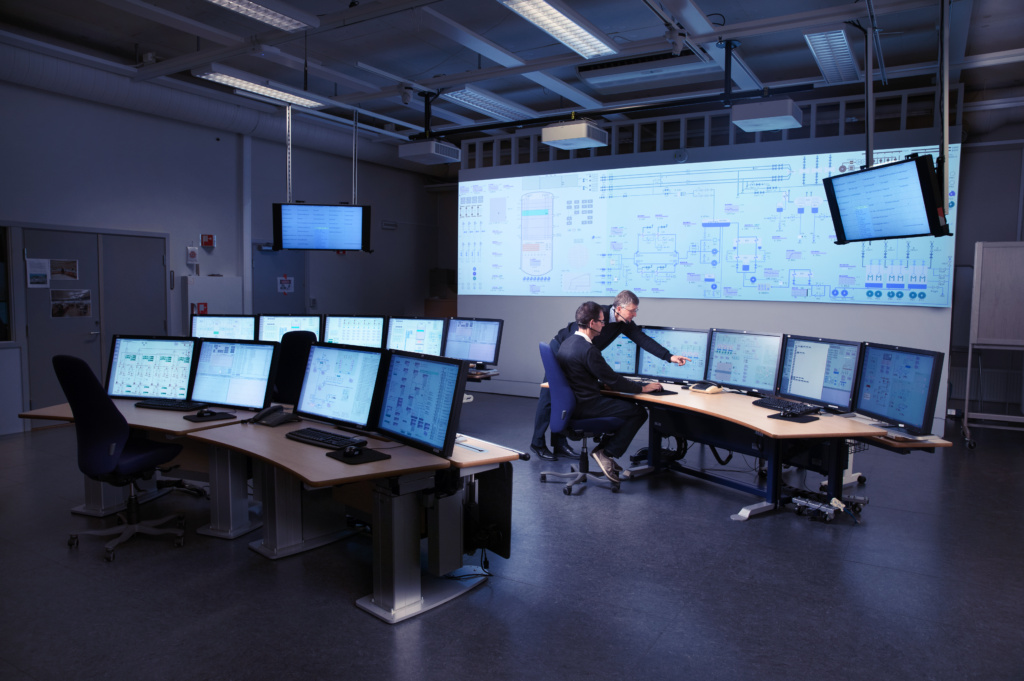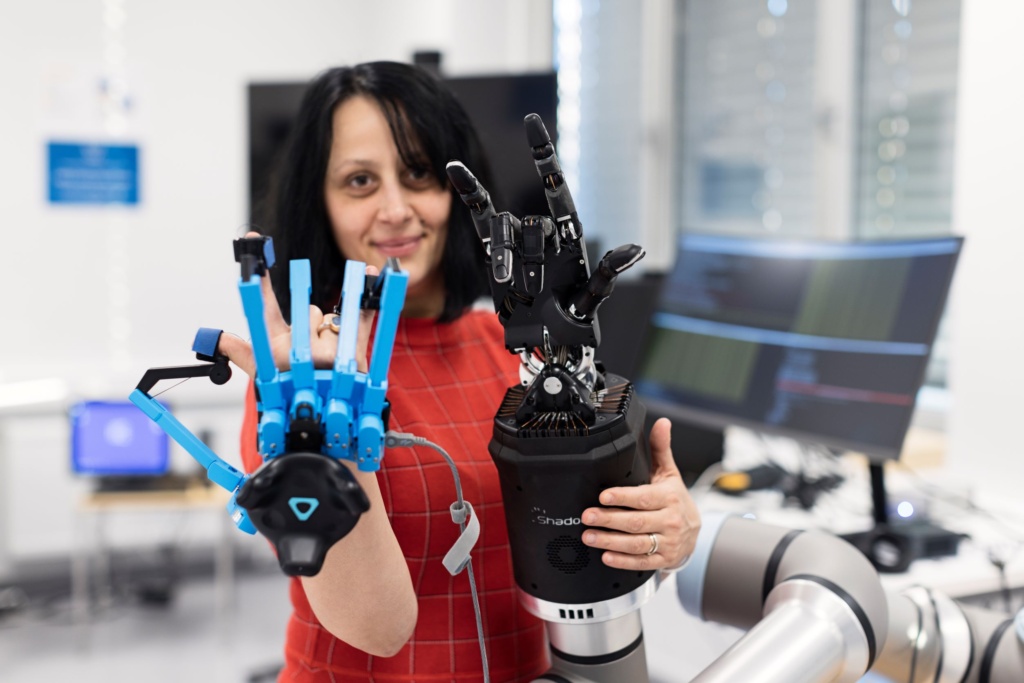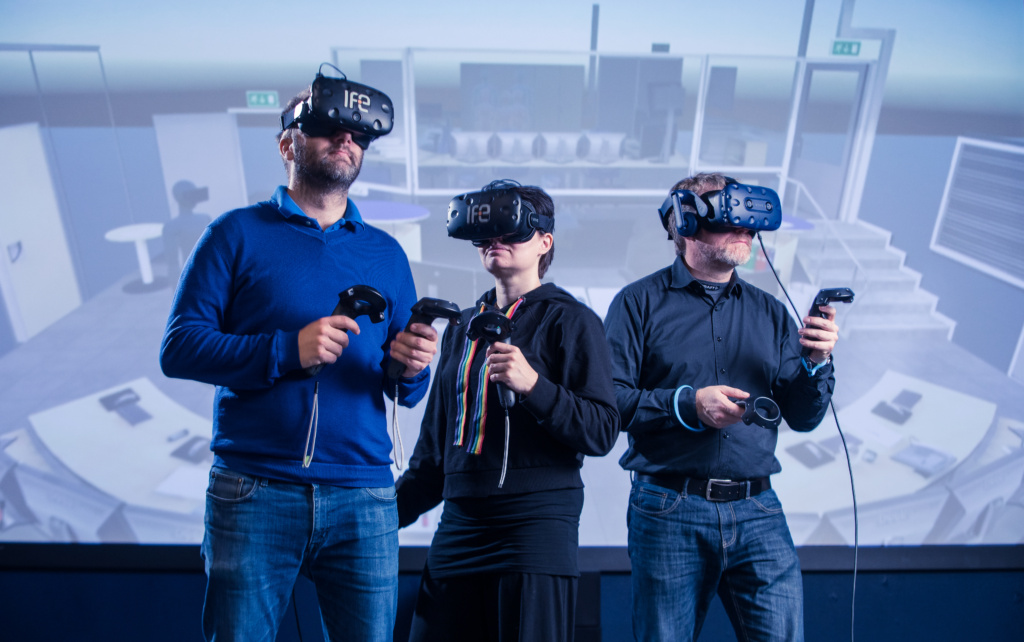Call for Papers
Contributions from member organisations are encouraged and welcomed.
Intended abstracts to be submitted to the Project by 20th June, 2023 to Ronja Sveen Bye ronja.sveen.bye@ife.no
The full text of these contributions should be received by the Project by 10th August, 2023 to Ronja Sveen Bye ronja.sveen.bye@ife.no

Registration
- EHPRG on site Lillehammer 2023 - In person participation
- EHPRG VIRTUAL 2023 - Virtual participation
Program
Technical Programme and Scope for EHPRG 2023
The meeting will open with an Introductory Session containing overview presentations and invited papers given by keynote speakers. Broader aspects of some of the topics to be covered in the Technical Sessions are often covered in this opening session.
The subsequent Technical Sessions will address the work performed by the Project, as well as by member organisations.

The topics to be covered:
- Human Performance
- Digital I&C – Safety Assurance
- Control Room Design & Evaluation
- Human-Automation Collaboration
- Digital Systems for Operations and Maintenance
- Digital Transformation of Decommissioning
- Cyber Security for Main Control Rooms

Location and meeting venue for EHPRG 2023
Lillehammer Town – Scandic Lillehammer hotel
Lillehammer, known as Norway’s wintercity, is a town with a charming atmosphere, and a outstanding terrain. It is a modern city that has also received awards for its architecture and the preservation of original buildings in their main walkingstreet. Nationally and internationally, Lillehammer is best known for hosting the 17th Olympic Winter Games in 1994.
Scandic Lillehammer hotel is situated in a private park, near Lillehammer city centre. It is the region’s largest conference hotel, for meetings, conferences, but also vacations and weekend trips.
Travel Arrangements to Scandic Lillehammer hotel
Please arrange your travel to destination Oslo Gardermoen airport (Oslo lufthavn - Avinor). Lillehammer can be reached by train from Oslo Airport Gardermoen aprox. 1h 45 min (Vy | Train | Bus | Taxi | Book your trip at vy.no | vy.no)
Speakers
William D. MAGWOOD, IV
Mr Magwood took up his duties as Director-General of the Nuclear Energy Agency (NEA) on 1 September 2014. He has extensive experience in both the regulatory and developmental aspects of nuclear energy, including at the international level.
From 2010 to 2014, he served as one of the five Commissioners appointed by the US President and confirmed by the US Senate to the US Nuclear Regulatory Commission (NRC). While a commissioner, he served as global voice for the importance of nuclear regulatory independence and
advocated the necessity of maintaining strong, credible and technically sound nuclear regulation in the United States and all countries that use nuclear power.
Prior to his appointment at the NRC, from 2005 to 2010 he provided independent strategic and policy advice to US and international clients on energy, environment, education, and technology policy issues. From 1998 to 2005, Mr Magwood was Director of the US Government’s civilian nuclear
energy programme at the US Department of Energy (DOE). During his tenure, he established the Idaho National Laboratory; created activities that reversed the decline of US nuclear technology education; and launched important initiatives such as the Generation IV International Forum (GIF)
and US “Nuclear Power 2010,” which helped restart nuclear plant construction in the United States. He was also actively involved in the work of the NEA, serving as a Steering Committee Bureau member from 1999 to 2003, and as Chairman of the Steering Committee from 2004 to 2005.
Prior to his experience at the DOE, Mr Magwood managed electric utility research and nuclear policy programmes at the Edison Electric Institute in Washington, DC, and was a scientist at Westinghouse Electric Corporation in Pittsburgh, Pennsylvania. Mr Magwood, a US national, holds Bachelor degrees in Physics and English from Carnegie Mellon University and a Master of Fine Arts from the University of Pittsburgh.
Peter Elder
Peter Elder, M.Sc. (Eng), B.Sc. (Engineering Physics)
Vice-President and Chief Science Officer
Technical Support Branch, Canadian Nuclear Safety Commission (CNSC)
Peter Elder has been working for the Canadian Nuclear Safety Commission for over 20 years in various regulatory roles covering the entire nuclear fuel cycle. He started as a technical specialist in 1996 as a fuel performance and safety analyst, and moved on to become a project manager in power reactor licensing. He has also occupied a variety of management roles throughout his career at the CNSC. He has experience in all areas of the organization’s mandate: safety, security, safeguards and environmental protection. He has also served as a nuclear counsellor at the Permanent Mission to the International Organizations in Vienna. In this role, he advised the Canadian government on International Atomic Energy Agency activities in nuclear safety and security, emergency management and technical cooperation.
Before joining the CNSC, he worked for AECL as a section head and research scientist in the area of high-temperature fuel behaviour and fission product release. He co-authored a number of scientific papers during this period on fuel behaviour under accident conditions, and was involved in several international collaborations in this area.
He completed a Master's in Materials Engineering from Queen’s University following his undergraduate degree in Engineering Science (Physics Option) from the University of Toronto.
He was appointed Vice-President and Chief Science Officer of the CNSC’s Technical Support Branch in April 2018.
Jing Xing
Jing Xing is a Sr. Human Performance Engineer at U.S. Nuclear Regulatory Commission (NRC). Since joining the NRC in 2008, She had led the development of the NRC’s Human Performance Testing Facility, the human reliability analysis method suites, Integrated Human Event Analysis System (IDHEAS). the NRC’s human factors research program for new reactors, and the guidance for conducing expert elicitation in risk-informed decision-making. Her current work focuses on integration of human factors and human reliability analysis in digital instrument and control (DI&C) systems. Prior to the NRC, she conducted human performance and human system integration research at the U.S. Federal Aviation Administration (FAA) and NASA. She also worked as a research associate on cognitive psychology at Stanford University. She had her BS degree in Electrical Engineering from Shandong University, MS in Computer Vision and Biophysics from China National Academy of Science, and Ph.D in Neuroscience from University of Pennsylvania. She had her postdoctoral research in Brain and Cognitive Science at MIT and California Institute of Technology. She is the leading author of multiple NRC regulatory guidance reports (NUREGs) and 100+ journal articles, conference papers, and technical reports.
Dr. Ronald Boring
Dr. Ron Boringis a Distinguished Human Factors Scientist and Department Manager at Idaho National Laboratory (INL). He has led control room modernization and human risk efforts for a variety of national and international partners.
He was the founder of the Human Systems Simulation Laboratory at INL and led development of prototyping tools such as the Advanced Nuclear Interface Modeling Environment (ANIME) and human factors evaluation methods like the Guideline for Operational Nuclear Usability and Knowledge Elicitation (GONUKE) to support control room development at U.S. utilities. He has developed the Human Unimodel for Nuclear Technology to Enhance Reliability (HUNTER) method, which is used extensively for risk modeling. Dr. Boring has a Ph.D. in Cognitive Science from Carleton University.
He was a Fulbright Academic Scholar to the University of Heidelberg, Germany, and currently holds the honorary title of Fellow of the Human Factors and Ergonomics Society. In 2021, he was the recipient of the Don Miller Lifetime Achievement Award from the American Nuclear Society. In 2022, he was recipient of the Arnold M. Small and Betty M. Sanders President’s Distinguished Service Award from HFES. He has published over 300 research articles in a wide variety of human reliability, human factors, and human-computer interaction forums.
Geert-Jan de Haas
Geert-Jan de Haas is program manager R&D at Nuclear Research and consultancy Group (NRG) in Petten, The Netherlands. He received his MSc and PhD in geology and geochemistry from the Utrecht University. A three year appointment as a material scientist was succeeded by a position as a (EU-funded) post-doc at the renowned Mineralogical Museum of the Oslo University. His research activities focused on the U-Pb geochronology of crust-forming processes in South Norway. In 1998 he was appointed as a lab manager at the Department of Geology and Mineral Resources Engineering, Norwegian University of Science and Technology (NTNU), Trondheim, Norway. In 2003 he started at NRG as team manager of various R&D expert teams and as lab manager of the new built radiological laboratory. In 2011 he was appointed to the position of program manager of NRG’s R&D program, funded by the Dutch ministry of Economic Affairs, including responsibility for NRG’s participation in EU framework programs and other international collaborations.
Geert-Jan has been member of the Board of Directors of the European Nuclear Society; currently he is amongst other member of the Governing Board of the OECD-NEA FIDES II programme and member of the Halden HTO management board.
John de Grosbois
John has over 30 years’ experience in the nuclear sector. He is currently at COG as "Program Manager, R&D and Strategic Initiatives". Prior to that he was Head of the Nuclear Knowledge Management Section at the IAEA. Before that he was with AECL for 20 years in various management roles focused on technology development related to I&C, safety, electrical and display systems.
Greg Jamieson
Greg Jamieson is Professor of Mechanical and Industrial Engineering at the University of Toronto. He uses theoretical, analytical, and empirical approaches to study human-automation interaction in complex industrial systems.
John R. Tappert
John R. Tappert, a 32 year veteran of the U.S. Nuclear Regulatory Commission, has been recently appointed as the Deputy Director for the Office of Nuclear Regulatory Research. He has held senior leadership positions in several programmatic areas including new reactor licensing, decommissioning and low level waste, rulemaking, and environmental assessments. He also served as Chief of Staff for Commissioner Ostendorff. Prior to joining the NRC, Mr. Tappert served in the U.S. Navy on nuclear-powered submarines. Mr. Tappert received a Bachelor’s Degree in Aerospace and Ocean Engineering from Virginia Tech and a Master’s Degree in Environmental Engineering from Johns Hopkins University. He also holds a Professional Engineer’s license.
Sushil Birla
Senior Technical Advisor, U.S. Nuclear Regulatory Commission
•Safety-critical cyber-physical systems engineering
Industrial automation, e.g., reactor protection systems
[Past] In-vehicle automation
•Nuclear regulatory research in SAFETY:
Evaluation
Assurance
Requirements engineering
Architecture
•PhD Computer Science & Engineering, University of Michigan, Ann Arbor, USA
Wang Xujia
Organization and position:
Deputy Director General of SNERDI Director of Chief Engineers Office and Director of General Technology Department of SNERDI
Professional Background:
Master degree of nuclear science and technology from TSU in China, enterprise mentor of SJTU&SMU. Around 20 years’ experience in Nuclear Engineering, engage on NPP general design/Reactor Core design/Nuclear safety analysis. Has published numbers of papers and obtained more than 10 patents.
As the main person, completed the development of advanced passive reactor, Guohe-1 (CAP1400). Besides, leading the development of SMR & research reactor, including the integrated heating reactor. Also promoted a number of works on reliability research, simulator development, etc.
Dr. Stanislas Couix
Dr. Stanislas Couix is an Expert in Human Factors and Ergonomics (HF&E) of control rooms at the Human and Organisational Factors team at EDF Research & Development, and he represents France at the IEC working group on nuclear power plant control rooms.
Since 2008 he has been working on the design and evaluation of control room and human systems interfaces (HSI) for the existing reactors and new builds in France.
After his PhD, he notably led two HF&E validation of the sociotechnical systems of the control room of EPR reactor. He then defined the new concept of control room HSIs and philosophy of automation of the new EPR2 fleet planned in France.
Since 2016, he started and led the HF&E engineering programme for the French SMR project, which encompasses the definition of the control room, HSIs and automation concepts as well as the definition of the control room teams’ organisation, and a significant contribution to the definition of the layout of buildings and the design of major components.
He’s currently moving to the NUWARD company to continue his work on the design of the NUWARD SMR.



